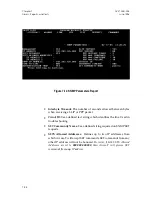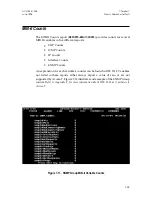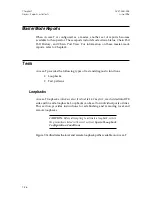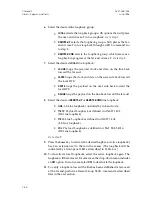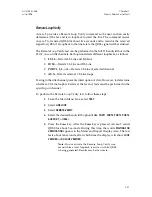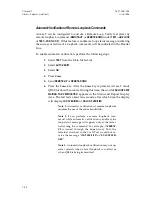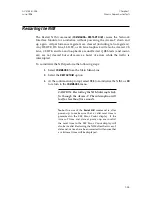
6.
Select the desired line loopback group:
•
LOCAL
selects the loopback group with options that will place
the near-end Access-T into a loopback. Go to step 7.
•
REMOTE-UP
selects the loopback group which places the far-
end Access-T into a loopback through an FDL command. Go
to step 8.
•
REMOTE-DOWN
selects the loopback group which removes a
loopback in progress at the far-end Access-T. Go to step 8.
7.
Select the desired
LOCAL
line loopback:
•
LSLINE
loops the received clock and data on the line back
toward the far end.
•
LSDTE
loops the clock and data on the user side back toward
the local DTE.
•
DSDTE
loops the payload on the user side back toward the
local DTE.
•
DSLINE
loops the payload on the line back toward the far end.
8.
Select the desired
REMOTE-UP
or
REMOTE-DOWN
line loopback:
•
LINE
: LS Line loopback controlled by in-band code.
•
T1E1P
: Payload Loopback as defined in ANSI T1.403
(DS Line loopback).
•
T1E1L:
Line Loopback as defined in ANSI T1.403
(LS Line loopback).
•
FDL
: Payload Loopback as defined in AT&T Pub 54016
(DS Line loopback).
Go to step 9.
9.
Press the
Enter
key to activate the desired loopback. Active loopbacks
have an asterisk next to them in the menu. (The loopback will be
indicated by a front-panel LED as described in Table 4-A.)
10.
To de-activate local loopbacks, select the active loopback again. The
loopback will be removed. In some cases, the drop-down menu includes
an
OFF
option. In such cases, select
OFF
to deactivate the loopback.
11.
To verify a loopback toward the line has been established or removed
at the far end, perform a Remote Loop Verify command as described
later in the next section.
Chapter 7
ACST-0351-005
Alarms, Reports, and Tests
June 1996
7-30









